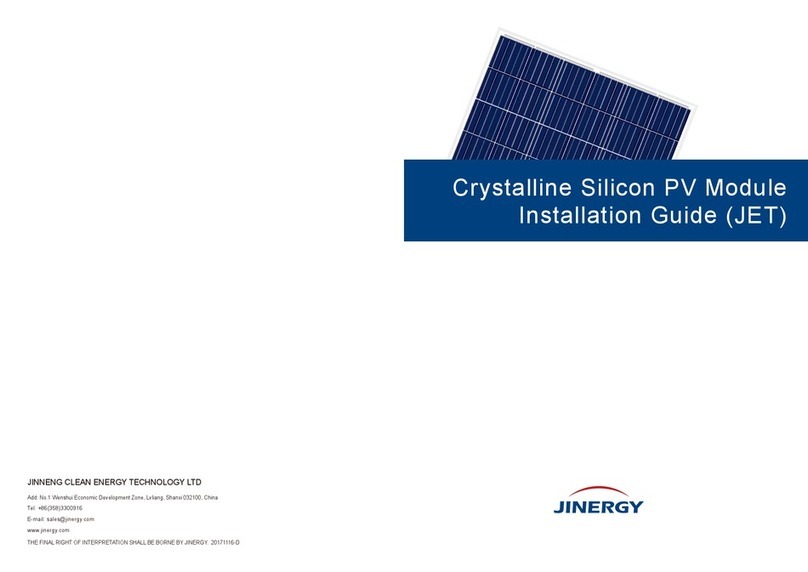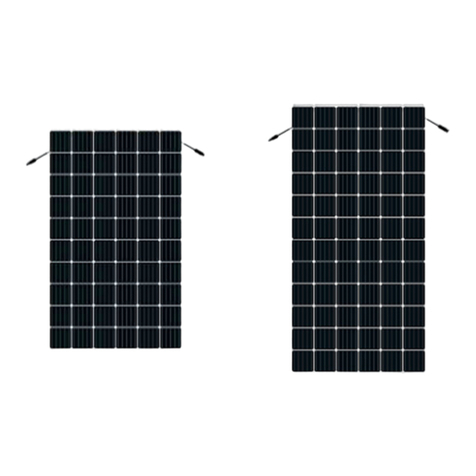
This document is only for internal use of JINNENG CLEAN ENERGY TECHNOLOGY LTD, and shall not be published or
copied without permission of the company.
2.1.5 Do not shade portions of the PV module surface from the sun for a long period of time. The
shaded cell will produce hot spot effect.
2.1.6 Do not clean the glass surface with chemicals.
2.1.7 Do not drop the PV module or drop objects onto the PV module.
2.1.8 Do not concentrate sunlight on the modules or panels.
2.1.9 Do not attempt to disassemble the modules, and do not remove any attached components
from the modules.
2.1.10 Do not scratch or hit at the back sheet, the glass, the terminal box. Do not pull the cables or
touch them with bare hands.
2.1.11 Do not drill holes in the frame or scratch the insulating coating of the frame.
2.1.12 Keep the PV module packed in the carton until installation and avoid carton moisture.
2.1.13 Do not use modules near equipment or in places where flammable gases may be generated.
2.2 Installation Safety
2.2.1 Wear protective head gear, insulating gloves, safety shoes, and insulated tools when installing the
modules.
2.2.2 Do not install the modules in rain, snow, or otherwise wet or windy conditions.
2.2.3 Completely cover the PV module surface with an opaque material during PV module installation and
wiring to prevent accidental charge buildup.
2.2.4 Plug in connectors tightly when working on wiring.
2.2.5 Due to the risk of electrical shock, do not perform any work if the terminals of PV module are wet.
2.2.6 Do not touch the terminal box and the end of output cables (connectors) with bare hands.
2.2.7 Do not unplug the connector under load.
2.2.8 Do not work alone.
2.2.9 Wear a safety belt if working far above the ground.
2.2.10 Do not wear metallic jewelry, which can cause electric shock, while installing or troubleshooting the
PV system.
2.2.11 Follow the safety regulations for any and all other system components, including wires, connectors,
charging regulators, batteries, inverters, etc.
2.2.12 Do not expose wires to direct sunlight. Use UV-resistant cabling.
2.2.13 Do not damage the surrounding PV modules or mounting structure when replacing a PV module.
2.2.14 Do not change any PV module components (diode, junction box, plug connectors, etc.).
2.2.15 Maximum reverse current for module is shown in Table 2. Use a blocking diode and maximum
series overcurrent protective device in the combiner box are recommended for reverse current
protection when more than three strings are connected in parallel.





























